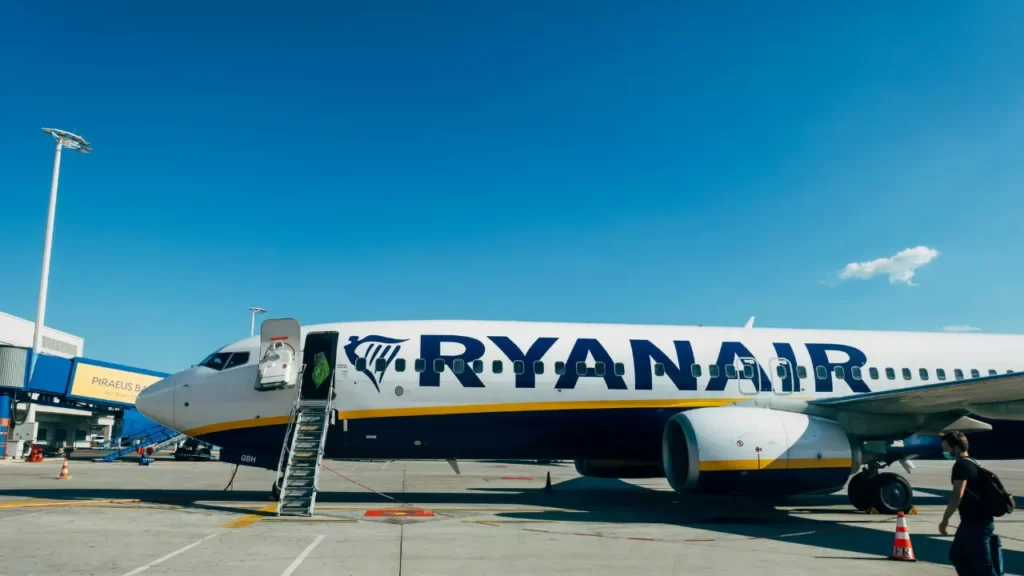
Ryanair Overview
Ryanair is an Irish ultra-low-cost carrier (ULCC) and one of the largest and most successful low-cost airlines in the world. Here is an overview of Ryanair.
Table of Contents
Founding and History:
- Ryanair was founded in 1984 by Tony Ryan, an Irish businessman. The airline began operations with a 15-seat Embraer Bandeirante turboprop aircraft, flying a route between Waterford in Ireland and London Gatwick.
Business Model – Low-Cost Carrier
- Ryanair is known for its aggressive low-cost business model. The airline focuses on offering low fares and charges passengers for additional services, including baggage, priority boarding, and in-flight refreshments.
Hub and Bases
- The primary hub of Ryanair is at Dublin Airport (DUB) in Ireland. The airline operates numerous bases across Europe, facilitating its extensive route network.
Fleet
- Ryanair operates a fleet consisting mainly of Boeing 737 aircraft. The airline is known for its high aircraft utilization, quick turnaround times, and fuel-efficient fleet.
Expansive Route Network:
Ryanair has an extensive route network that connects numerous cities and airports across Europe. The airline focuses on serving secondary and regional airports, providing cost savings and accessibility.
No-Frills Service
Ryanair is a no-frills airline, emphasizing cost savings and efficiency. The airline’s approach includes charging for optional services, limiting in-flight amenities, and maintaining a high level of aircraft utilization.
Online Booking and Check-In
Ryanair pioneered online booking and check-in processes, encouraging passengers to use digital platforms for ticket purchases and check-in to reduce operational costs.
Frequent Schedule Adjustments
Ryanair is known for its frequent schedule adjustments and route realignments based on changing market demands, economic conditions, and regulatory considerations.
Record of Growth
Ryanair has experienced significant growth since its founding, becoming one of the largest airlines in Europe by passenger numbers. The airline’s growth is attributed to its low-cost model and aggressive expansion strategies.
Controversies and Criticisms
Ryanair has faced criticism for its no-frills approach, customer service, and controversial statements made by its leadership. Despite criticisms, the airline has maintained a strong market position.
Impact of COVID-19
Like many airlines, Ryanair faced challenges and disruptions due to the COVID-19 pandemic. The airline implemented measures to adapt to changing travel conditions and restrictions.
Environmental Initiatives
In recent years, Ryanair has made commitments to environmental sustainability, including the improvement of fuel efficiency and the reduction of carbRyanair Overviewon emissions.
Ryanair Overview history

Ryanair, one of the most prominent low-cost airlines in the world, has a history that spans several decades. Here is an overview of key milestones in the history of Ryanair:
Founding and Early Years (1984-1990):
- 1984: Ryanair was founded in 1984 by Tony Ryan, an Irish businessman. The airline started operations with a 15-seat Embraer Bandeirante turboprop aircraft, flying a route between Waterford in Ireland and London Gatwick.
- 1985: The airline expanded its fleet and route network, offering low-cost flights between Dublin and London.
Low-Cost Model and Transformation (1990s)
- In the early 1990s, under the leadership of Michael O’Leary, Ryanair shifted its strategy to become a low-cost carrier (LCC). The airline aimed to offer no-frills, low-fare travel to stimulate demand and compete with traditional carriers.
- The adoption of the low-cost model included various cost-cutting measures, such as secondary airport usage, quick turnaround times, and point-to-point routes.
Aggressive Expansion and European Network (1990s-2000s):
- Ryanair pursued an aggressive expansion strategy, rapidly increasing its fleet and opening new routes across Europe.
- The airline’s focus on serving secondary airports rather than major hubs contributed to lower costs and accessibility for travelers.
- By the early 2000s, Ryanair had become one of the largest low-cost carriers in Europe, challenging the dominance of legacy carriers.
Successful IPO (1997)
- In 1997, Ryanair went public with its initial public offering (IPO) on the Dublin and NASDAQ stock exchanges, providing capital for further expansion.
Fleet Standardization – Boeing 737
- Ryanair adopted a fleet standardization strategy by operating a single aircraft type, the Boeing 737. This approach streamlined maintenance, training, and operational efficiency.
Online Booking and Cost-Cutting Measures:
- Ryanair became a pioneer in online booking, encouraging passengers to book tickets and check in via the internet to reduce administrative costs.
- The airline implemented various cost-cutting measures, including non-reclining seats, limited in-flight services, and a strict approach to baggage fees.
Acquisition of Buzz and Expansion (2003):
- Ryanair acquired the struggling low-cost carrier Buzz in 2003, contributing to its continued expansion in the European market.
Frequent Schedule Adjustments and Adaptations:
- Ryanair has been known for its frequent adjustments to schedules, routes, and business strategies based on market conditions, regulatory changes, and economic factors.
Environmental and Sustainability Initiatives (2019 Onward):
- In more recent years, Ryanair has made public commitments to environmental sustainability, including initiatives to reduce carbon emissions and improve fuel efficiency.
Impact of COVID-19 Pandemic (2020s):
- The COVID-19 pandemic had a significant impact on the aviation industry, including Ryanair. The airline faced challenges related to travel restrictions, reduced demand, and operational adjustments.
- Ryanair’s history reflects its evolution from a regional airline to one of the largest low-cost carriers globally. The airline’s relentless focus on cost efficiency and innovation has played a crucial role in its success. Please note that developments may have occurred since my last update in January 2022. For the latest and most accurate information about Ryanair, including its current status and recent changes, it is recommended to check the official Ryanair website and recent news sources.
